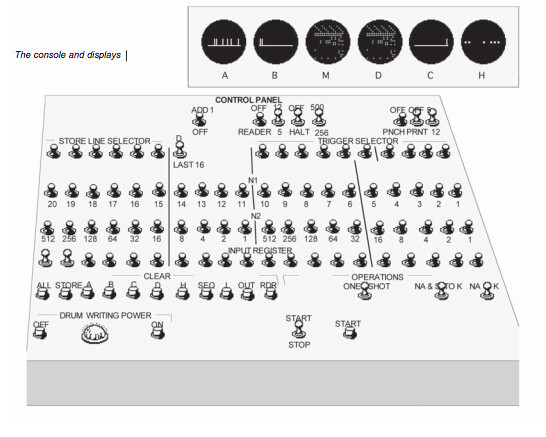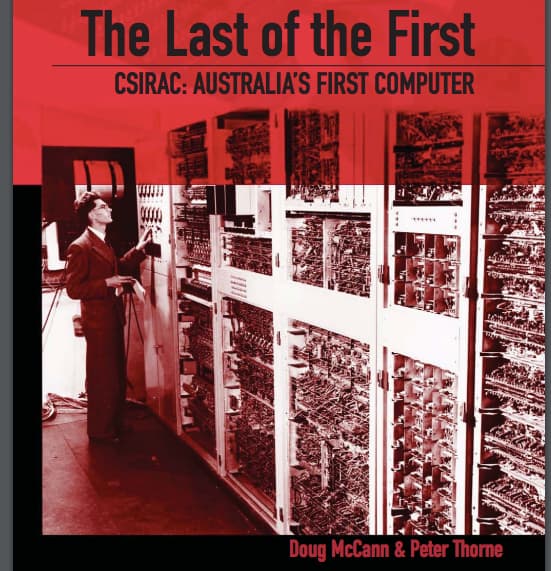The 1949 Australian super computer : the CSIRAC
Nice! There’s an informative short video within. See also related links in previous topic:
Early computer music in Australia
Also, there’s a writeup in Computer Resurrection by Peter Thorne here.
Also also, I notice there’s a free PDF of a 200 page book by McCann and Thorne: “The last of the first. CSIRAC: Australia’s first computer”
Ah, and a 1965 film too featuring the designer Trevor Pearcey (transcript here):
Some clips from the book - first off, booting it:
The Mk 1 did not have an operating system which started automatically and allowed a user to type in commands to, say, run a program from paper tape. They were presented with a machine with an empty memory and a bank of buttons and switches…
Originally a primary input program of 22 instructions was wired into Post Office uniselectors1 (read only memory!). The computer could transfer this “bootstrap” into its delay line memory and this could run the user’s program.
By about 1953 the uniselectors had proven unreliable and the “Primary” bootstrap was read from 12 channel paper tape. This was loaded by setting a special operating mode … and the tape was read into succeeding memory locations. As this only loaded 12 bits into each 20 bit word some ingenious programming was required
For application debugging:
Now all the user had to do was to make the program work properly… And Mk 1 helped there too. It could display all its working registers and the last 16 instructions executed. It could be given an address at which to stop (a “breakpoint”), and be stepped by one instruction at a time. It even had lights to show the computer’s internal states.
This was a user-friendly computer.

A note from the Resurrection article:
Later in Melbourne, as a further aid to stability of operation, the box containing the mercury delay lines was provided with a thermostat and a heater that maintained the lines at a constant temperature – set above the usual ambient. This worked satisfactorily except on the hottest summer days when ambient temperatures in the room exceeded 40° Celsius
And another:
The usability of the computer was greatly improved by the development in the late 1950s of an interpretive language “Interprogram” by Geoffrey Hill. Interprogram was comparable in ease of use to the later BASIC language. This enabled a wider range of people to program and use CSIRAC. The development and implementation of such a facility on a machine of less than one kilowords was a tour de force. Geoff Hill (who also created the first computer generated music in Sydney in 1950/51) is considered to have been Australia’s first super programmer.
Also
The reliability of the computer improved over time. However, one hazard both to the Computation Laboratory personnel and the program reliability was the proximity of high-energy physics accelerators. One of these, a 600KV Van der Graff generator, could introduce spurious bits in the CSIRAC memory when it discharged to ground. The other, a cyclotron, would cause the computer to lose bits due to power brown-outs when the motor generator that powered the cyclotron beam magnet was started. Regrettably these two influences did not cancel each other out.

